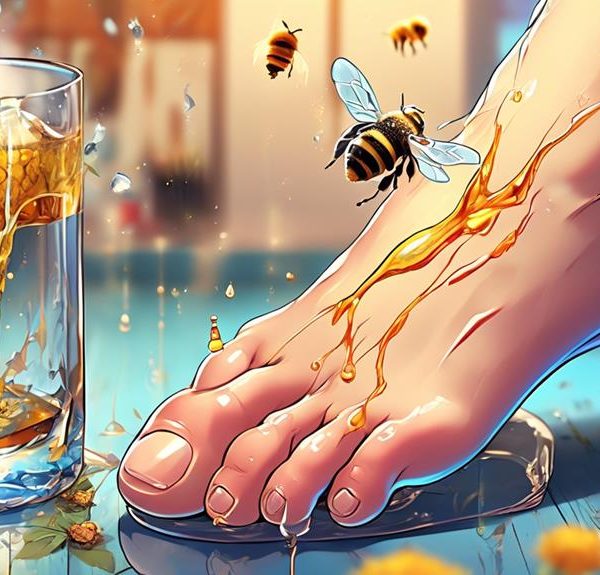Learn the intriguing distinctions between bees and butterflies, their life cycles, roles in ecosystems, and interactions with humans in our enlightening guide.
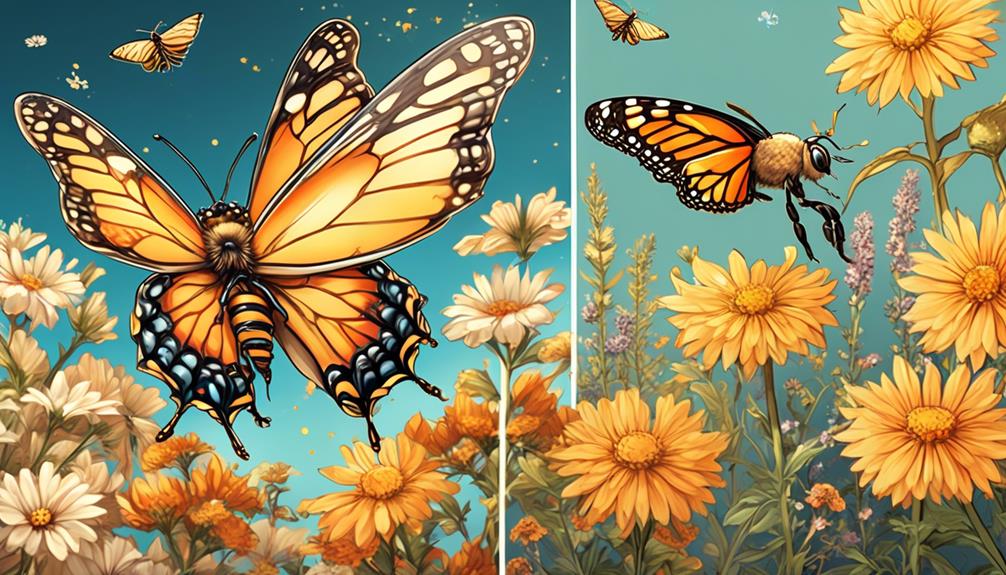
Difference Between a Bee and a Butterfly?
Just as stars vary in their brightness in the night sky, so too do bees and butterflies in their roles within nature.
You've probably seen both in your garden, buzzing or fluttering around from flower to flower, but have you ever stopped to consider how different they actually are?
In this discussion, we'll examine their physical characteristics, life cycles, diets, roles in the ecosystem, and their interactions with humans.
You might think you know these creatures well, but there's more to them than meets the eye.
Stick around, you're in for an enlightening journey into their contrasting worlds.
Key Takeaways
- Bees and butterflies have distinct physical differences, such as the shape of their bodies, the presence of a stinger in bees, and the characteristics of their wings and antennae.
- Both bees and butterflies undergo complete metamorphosis, but their life cycle stages and durations differ.
- Bees consume nectar and pollen from flowering plants, while butterflies are exclusively nectar feeders and caterpillars consume plant leaves.
- Bees and butterflies play crucial roles as pollinators in the ecosystem, contributing to plant diversity and serving as indicators of a healthy environment.
Physical Differences
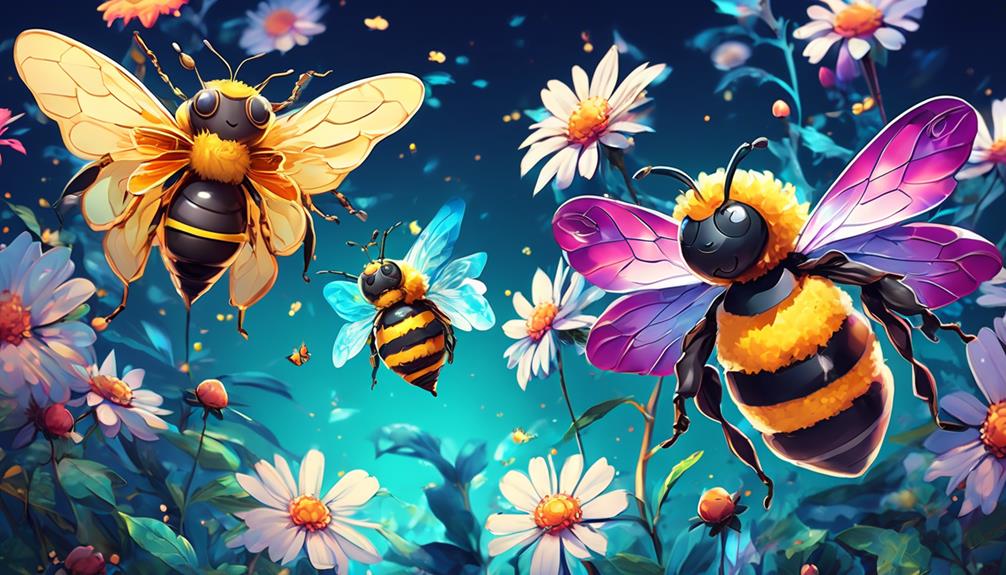
When you closely examine a bee and a butterfly, you'll notice key physical differences that clearly distinguish one from the other. Let's delve into these differences.
Bee bodies are typically round and robust, covered in tiny hairs. This hair acts as a pollen magnet, aiding in the pollination process as the bee moves from flower to flower. In contrast, butterflies possess slender, smooth bodies, not ideal for carrying pollen.
On a bee's rear, you'll find a stinger, their primary defensive mechanism. Butterflies lack this feature, relying on mimicry and flight for protection instead.
The wings are another distinguishing factor. Bee wings are transparent and relatively shorter, usually tucked on their back when not in use. Conversely, butterfly wings are large, vibrant, and adorned with unique patterns, often spread out when at rest to display their intimidating size to predators.
Lastly, take note of their antennae. Bees have short, elbowed antennae, while butterflies possess long, thin antennae with a small club at the end.
Through this analysis, you can see that these creatures, while both vital pollinators, are physically distinct in their own ways. Understanding these differences can enhance your appreciation of nature's intricate designs.
Varied Life Cycles
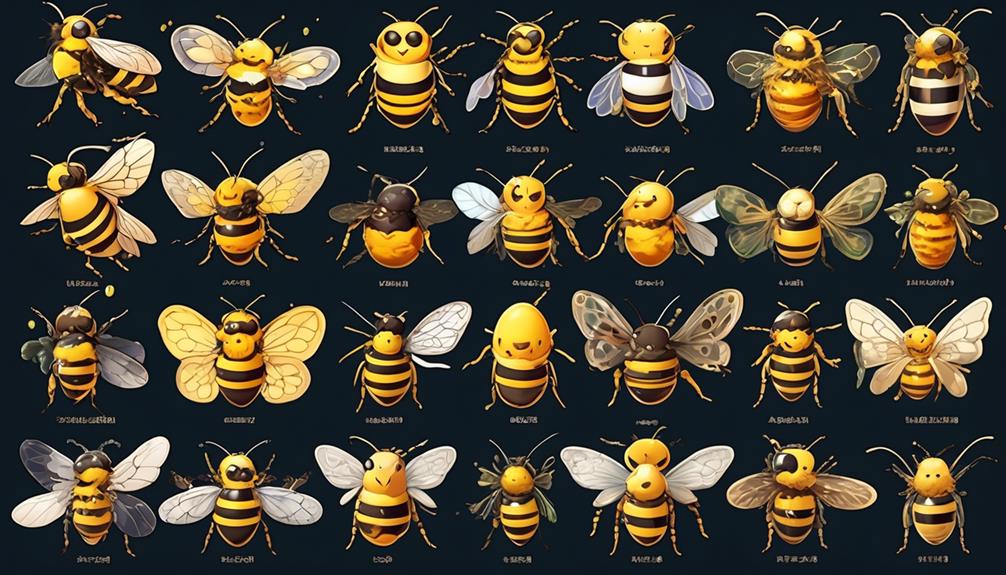
Just as their physical features set them apart, so too do the life cycles of bees and butterflies exhibit intriguing distinctions. As you delve into the world of these fascinating creatures, you'll realize that their lifecycles are as diverse as their appearances.
Bees undergo complete metamorphosis, transitioning through four distinct stages: egg, larva, pupa, and adult. After the queen bee lays an egg, it hatches into a larva which is fed by worker bees until it becomes a pupa. This pupa then transforms into an adult bee, which can either be a worker, drone, or new queen.
Conversely, butterflies also go through complete metamorphosis, but their process is slightly different. A butterfly begins life as an egg, morphs into a caterpillar (larva), then forms a chrysalis (pupa) where it undergoes its final transformation into a beautiful winged adult.
In essence, while both bees and butterflies experience complete metamorphosis, the specific stages and their durations differ. These differences not only reflect the unique adaptations of each species but also highlight the wonderful diversity that exists within the insect world.
Distinctive Diets
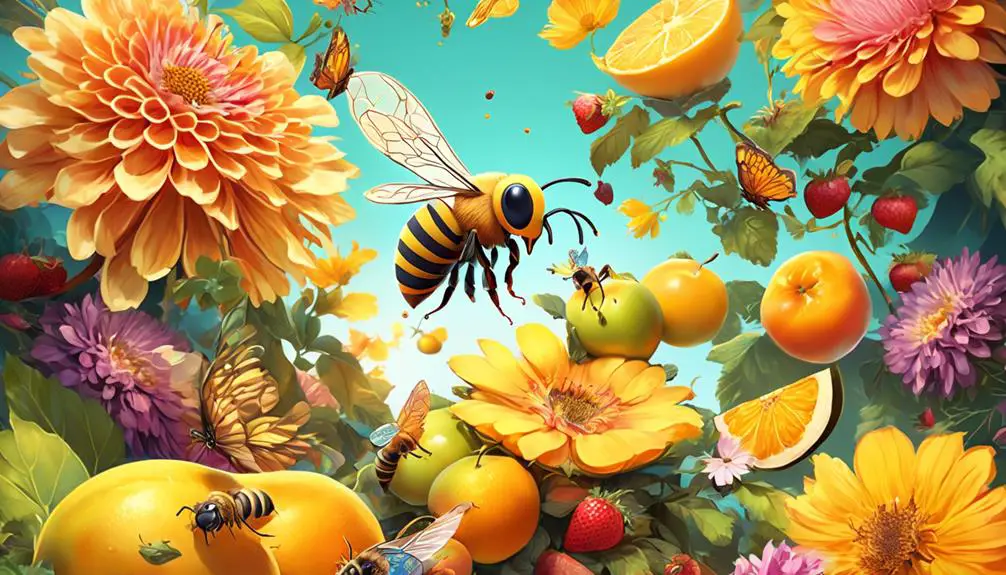
In addition to their unique life cycles, bees and butterflies also have distinctive diets that further differentiate them in the insect kingdom.
You'll find that bees, as social insects, primarily consume nectar and pollen from a variety of flowering plants. The nectar provides them with essential sugars that serve as their main energy source, while pollen supplies the necessary proteins and fats. Interestingly, worker bees also collect pollen to feed to their larvae, ensuring the colony's continued growth and survival.
On the other hand, adult butterflies are exclusively nectar feeders. They use their long, tube-like proboscis to reach into flowers and sip the nectar. This sugary fluid supplies them with the nutrients they need for energy, but lacks the proteins and fats necessary for growth and reproduction. Those nutrients were obtained during the caterpillar stage, where they consumed plant leaves.
Though they both rely on flowers for sustenance, the diets of bees and butterflies show significant differences in substance and purpose. Understanding these dietary distinctions not only helps differentiate these insects, but also highlights their roles in pollination and the broader ecosystem.
Role in the Ecosystem
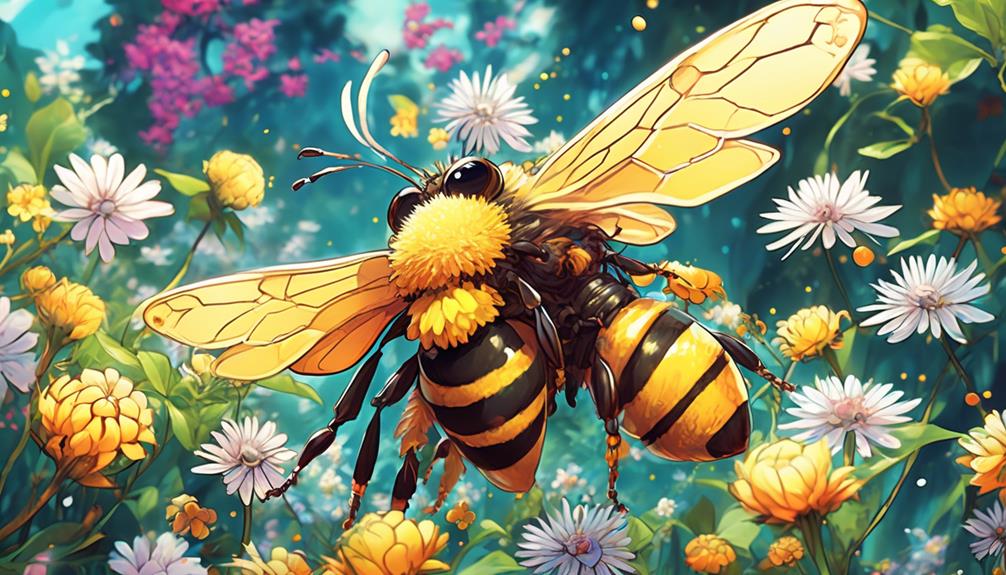
Both bees and butterflies play pivotal roles in our ecosystem, acting as vital pollinators and contributing significantly to biodiversity.
Bees, in particular, are critical for pollinating a large proportion of our food crops. As you may know, plants need to be pollinated to produce fruit and seeds. Without bees, you wouldn't see as many apples, blueberries, or almonds on your grocery store shelves.
Butterflies, on the other hand, aren't as efficient as bees at pollination. They do, however, contribute to plant diversity by pollinating different types of flowers. Butterflies are drawn to brightly colored, fragrant flowers, often those that bees may overlook. By visiting these plants, they're helping to ensure the survival of flower species that might otherwise be ignored.
Additionally, both bees and butterflies serve as food for other animals, making them crucial components of the food chain. They're also indicators of a healthy environment and ecosystem. A decline in their populations can signal problems like habitat loss, pollution, or climate change.
Interaction With Humans
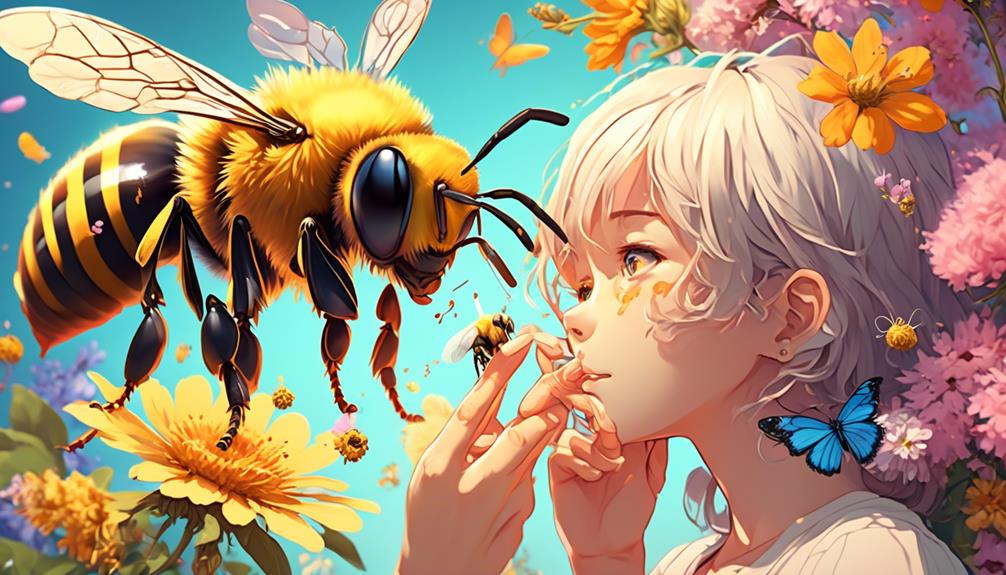
While you might not realize it, your daily interactions with bees and butterflies significantly impact these insects, their populations, and, ultimately, our ecosystems. Take bees, for instance. They are critical pollinators, but when you swat at them or use pesticides in your garden, you're adversely affecting their numbers and disrupting their pollination processes. Consequently, this affects the balance of our ecosystems and the food supply chain.
On the other hand, butterflies, which are also important pollinators, often inspire a sense of wonder and peace in humans. Encouraging their presence in your garden with butterfly-friendly plants can boost their populations and contribute to biodiversity.
Here is a comparison to further illustrate these points:
Interaction | Impact |
|---|---|
Swatting at bees | Reduces bee populations |
Using pesticides | Harms bee health and disrupts pollination |
Planting butterfly-friendly flowers | Boosts butterfly populations |
Catching butterflies | Can harm them and reduce their populations |
Observing and appreciating butterflies | Contributes to human well-being |
In essence, your actions can either harm or benefit these insects. By making mindful decisions, you can contribute to sustaining and enhancing their populations and our ecosystems.
Threats and Conservation Efforts
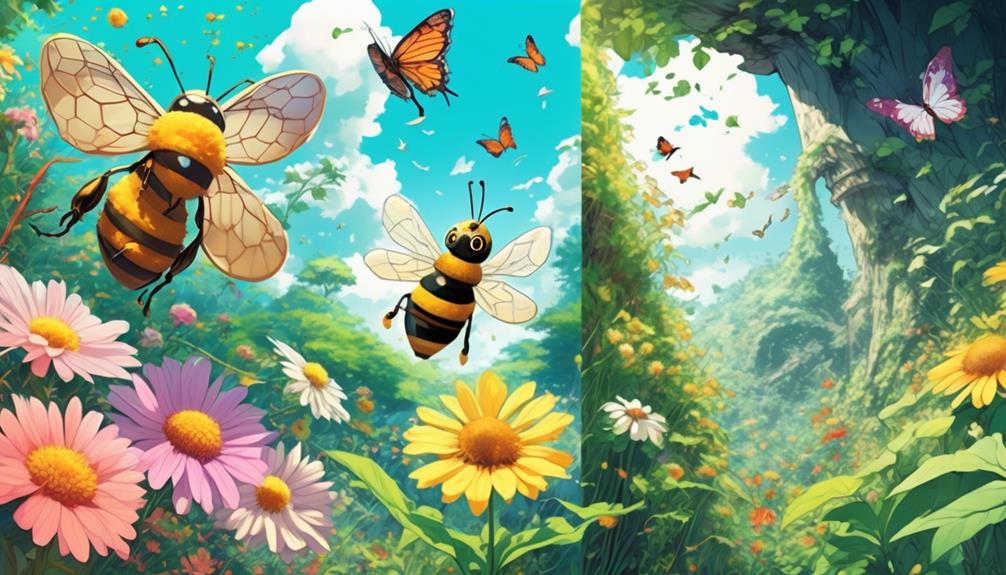
Despite the beauty they add to our world, bees and butterflies face numerous threats that pose a significant risk to their survival, and it's up to us to step up conservation efforts. Key threats include habitat loss, climate change, and the use of pesticides.
Habitat loss due to urbanization and deforestation drastically reduces the availability of plants they need for food and reproduction. Climate change alters the timing of plant flowering, disrupting the synchronization between the lifecycle of these insects and their food resources. Pesticides, particularly neonicotinoids, can be lethal to bees and butterflies, even at low concentrations.
Conservation efforts you can contribute to include creating pollinator-friendly habitats in your garden by planting native and flowering plants. Limiting or completely avoiding the use of pesticides also helps. Remember, these insects play an integral role in pollination, a process vital to food production.
Additionally, supporting local, national, and international conservation initiatives is crucial. These include habitat protection, research funding, and laws restricting harmful pesticides. By understanding the threats bees and butterflies face, and actively participating in their conservation, you're contributing to the sustainability of these beautiful creatures and the ecosystems they support.
Frequently Asked Questions
What Are Some Common Myths and Misconceptions About Bees and Butterflies?
You might think bees are aggressive and butterflies are harmless. But that's not entirely true.
Bees generally don't attack unless provoked. They're crucial pollinators, not just stinging pests.
Butterflies, while not dangerous, aren't as innocent as they seem. Some caterpillars can be destructive pests.
Also, it's a myth that touching a butterfly's wings kills it. It can actually fly with some damaged scales.
Misconceptions often lead to fear or harm, so it's important to learn the facts.
How Are Bees and Butterflies Depicted in Different Cultures and Folklore?
In various cultures and folklore, bees and butterflies are depicted differently. You'll find bees often symbolize hard work and community, while butterflies represent transformation and beauty.
For example, in Greek mythology, bees are seen as messengers of the gods.
On the other hand, the Japanese view butterflies as souls of the departed.
It's fascinating to observe these diverse interpretations across cultures.
Are There Any Unique Medical or Health Benefits Related to Bees and Butterflies?
Indeed, there are unique health benefits related to bees and butterflies. Bees, specifically, produce honey and propolis, both known for their antimicrobial, anti-inflammatory, and antioxidant properties.
Butterfly pea flowers, associated with butterflies, are used in teas for their potential cognitive enhancing effects.
However, it's worth noting, always consult a healthcare professional before adding these to your diet.
What Are the Impacts of Climate Change on the Populations of Bees and Butterflies?
Climate change significantly impacts both bees and butterflies. It's altering their habitats, messing with their migration patterns, and reducing their food sources.
Bees are particularly vulnerable, as warmer winters disrupt their hibernation, leading to population decline.
Butterflies also suffer, as changing temperatures affect their life cycles.
Is There Any Scientific Research Being Conducted on Bees and Butterflies for Technological Advancements?
Yes, you'll find numerous scientific studies being conducted on bees and butterflies for technological advancements.
Researchers often study their flight patterns, behaviors, and physiological structures to inspire new technologies.
For instance, the aerodynamics of bee's flight can potentially improve drone technology.
Similarly, the iridescent colors on butterfly wings are being studied for advancements in pigment technology.
Conclusion
In wrapping up, you'll see that bees and butterflies aren't just different in appearance. Their life cycles, diets, roles in the ecosystem, and interactions with us humans significantly vary too.
These differences, coupled with the threats they face and the ongoing conservation efforts, make them unique, vital parts of our world. Understanding these distinctions can help us appreciate their roles and better protect them.
Remarkable, isn't it?


